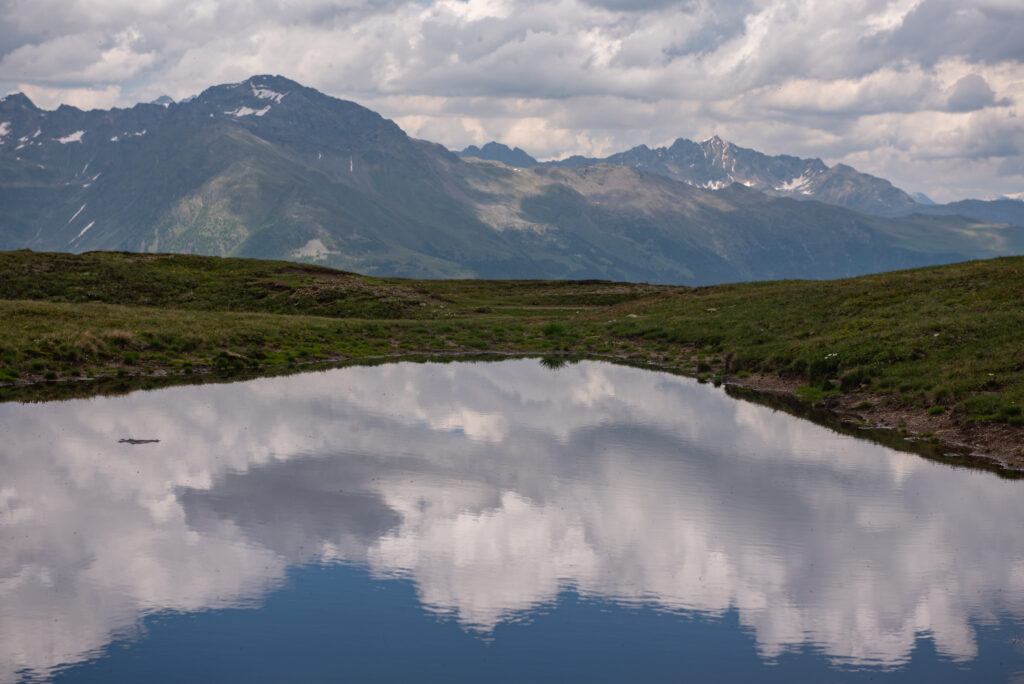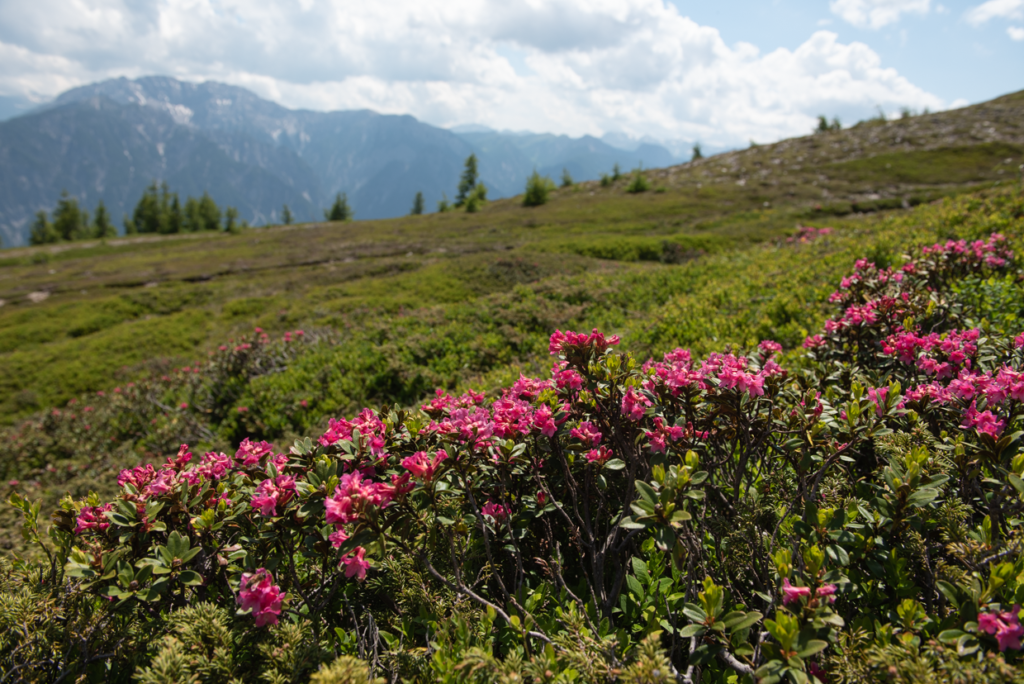
High up, where clouds get caught at granite peaks and marmots whistle with the wind, where winters are brutally long and blinding, and summers dangerously close to the sun, there, in the dizzying heights of the Austrian Alps, grows a mythical flower: the flaming pink Alpine Rose.
Together with the better known Enzian and Edelweiss, the Alpine Rose is one of the three iconic flowers of the High Alps – a token of love and proof of bravery when plucked and delivered to a lover waiting down in the village.
The sturdy scrub-like plant exclusively grows between the tree-line and the rocky peak. It’s evergreen and therefore needs the thick protective layer of snow to withstand the freezing temperatures of winter. It flowers for the short period of Alpine summer only, from late June to beginning of August. But when its petals sparkle in the mountain sun like crimson dew, the Alpine Rose is mesmerizing.
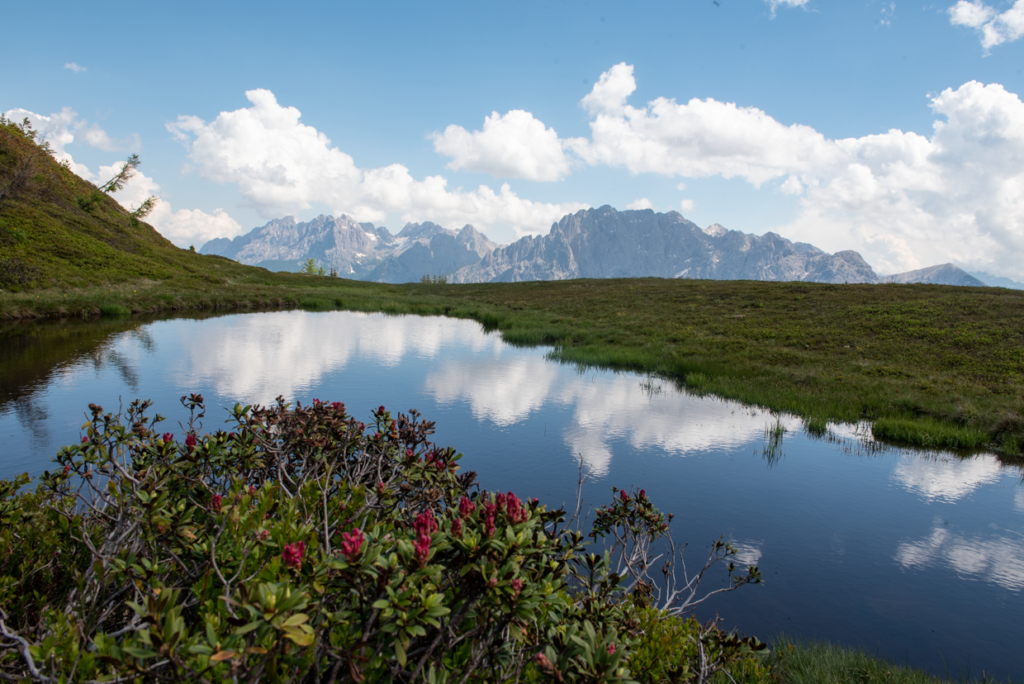
Its folkloristic name in the German speaking Eastern Alps is “Almrausch”, which can be translated to: intoxicated by the Alps – an expression that equals the flower to the effect of alcohol or love. In other words: a mountain high. Like drunks or lovers, climbers charmed by the Alpine Rose lose their minds, their heads, and ultimately their lives. Village boys and tourists alike.
In 1871, an especially tragic incident was reported in the Neue Zürcher Zeitung: Beautiful 19 year-old Luisa Büchlerer fell to her death while plucking Alpine Roses: “She didn’t heed the warnings of the guides”, the paper stated, “nor the calls of strangers, as they implored her not to venture farther, but she moved on, closer to the steep decline, for it’s here that the most beautiful flowers are glowing.”
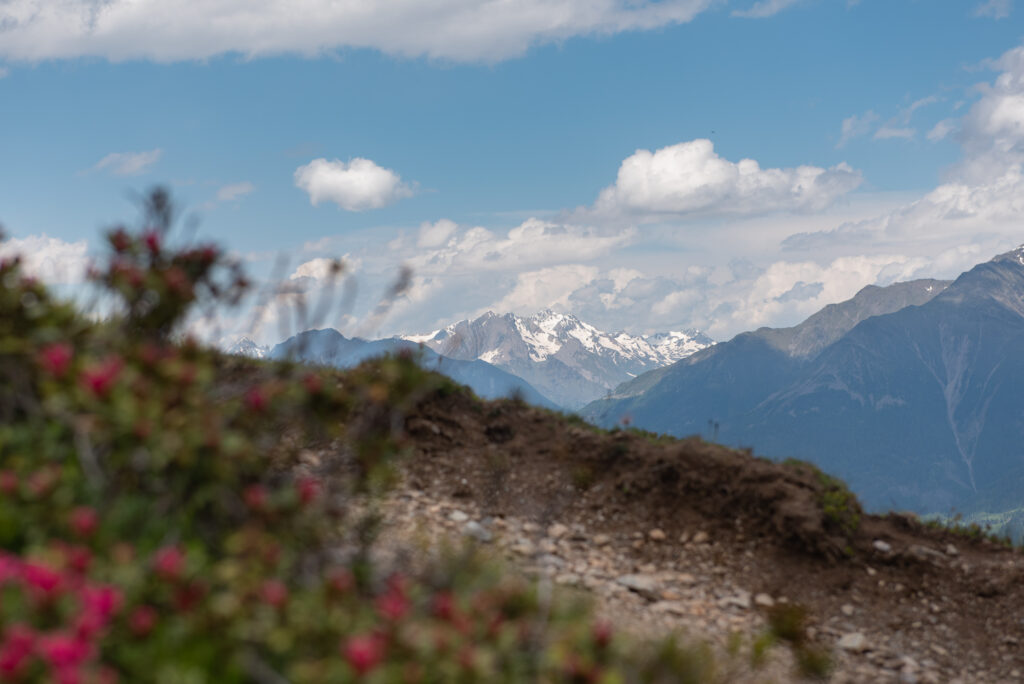
Its deadly habitat is not the Alpine Rose’s only danger. Rhododendron hirsutum and rhododenron ferrugineum – so the scientific names of the two species found in the Eastern Alps – are considered poisonous. Acetylandromedol found in petals, leaves and stem causes nausea, vomiting and diarrhea, and leads to death as swiftly as a fall from a mountain peak.
Honey from Alpine Roses, on the contrary, is not toxic at all, but a sweet delicatessen. In summer beekeepers relocate their hives to the high alps, knowing that their bees are just as crazy for the blooming Alpine Roses. The honeybees ignore other Alpine flowers to feast on the pink blossoms. Although not wild like its favorite flower, the local Carniolan honeybee is known to be just as resilient in rough climate, but gentle towards the beekeeper.
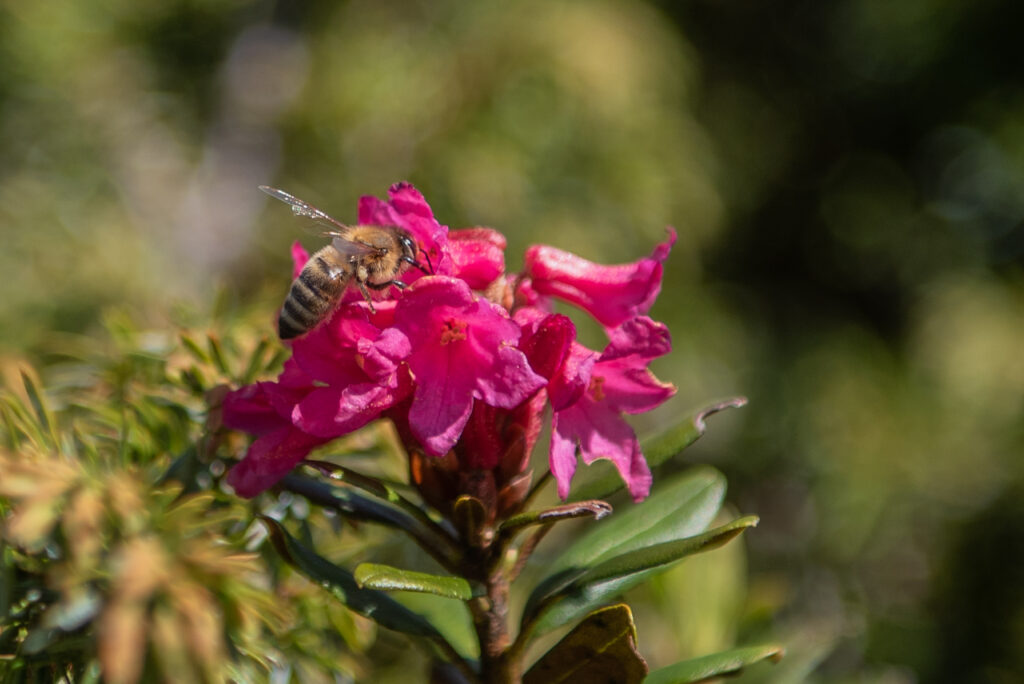
Aside from lovedrunk boys, hapless tourists and greedy bees, most wanderers shy away from plucking the Alpine Rose. In the old days, the flower was believed to attract thunder and lightning – another deadly trap in high mountains. Not only was it advised to stay away from the pink blossoms, but by no means to bring them home, for the lightning will follow the flowers.
This belief has since been proven untrue – and wanderers are indeed welcome to pluck a few flowers to decorate their homes. Contrary to common belief is not under protection like the Edelweiss or the Enzian. Although differently regulated on a local basis, only its commercial use and trade are forbidden. There are in fact plenty of Alpine Roses in the Alps nowadays. For economic reasons, agriculture in high altitude has dramatically decreased in the past century, and so many alpine pastures have grown wild again and the habitat of Alpine roses again expanded.
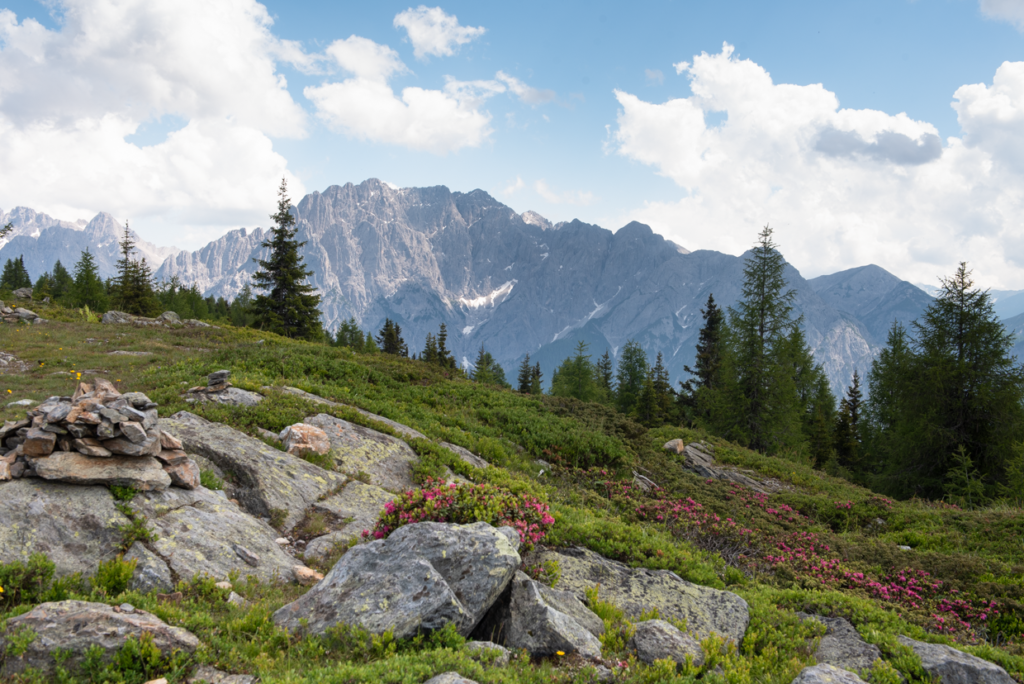
As it turns out, the mythical Alpine Rose is neither scarce, nor attracting lightning or thunder, nor especially toxic. Despite being a member of the Rhododendron family – science has long discovered that the Alpine Roses aren’t posionous at all. But why are all these myths so widespread and persistent?
One reason surely lies in the ongoing romanticizing of the Alps. Once, the high mountain riff was inaccessible, a strange and horrid barrier divorcing North from South, and each crossing regarded an act of heroism. Only in the 19th century, with the modernization and industrial growth were the Alps regarded a place for spiritual retreat and recreation, a last enclave of pristine, divine nature in a fast secular world.
You see, I want a lot.
Maybe I want it all:
the darkness of each endless fall,
the shimmering light of each assent.
So many are alive who don’t seem to care.
Casual, easy, they move in the world
as though untouched.
But you take pleasure in the faces
of those who know they thirst.
You cherish those
who grip you for survival.
You are not dead yet, it’s not too late
to open your depths by plunging into them
and drink in the life
that reveals itself quietly there.
Rainer Maria Rilke wrote about the Alps in his Book of Hours published in 1905. The Austrian poet found God in the high mountains. Before, in 1779 already, the German poet Johann Wolfgang Goethe had found himself in the Alps, as he wrote in his Spirit Song Over the Waters
Down from the lofty rocky wall
Streams the bright flood
Then spreadeth gently in cloudy billows
O’er the smooth rock
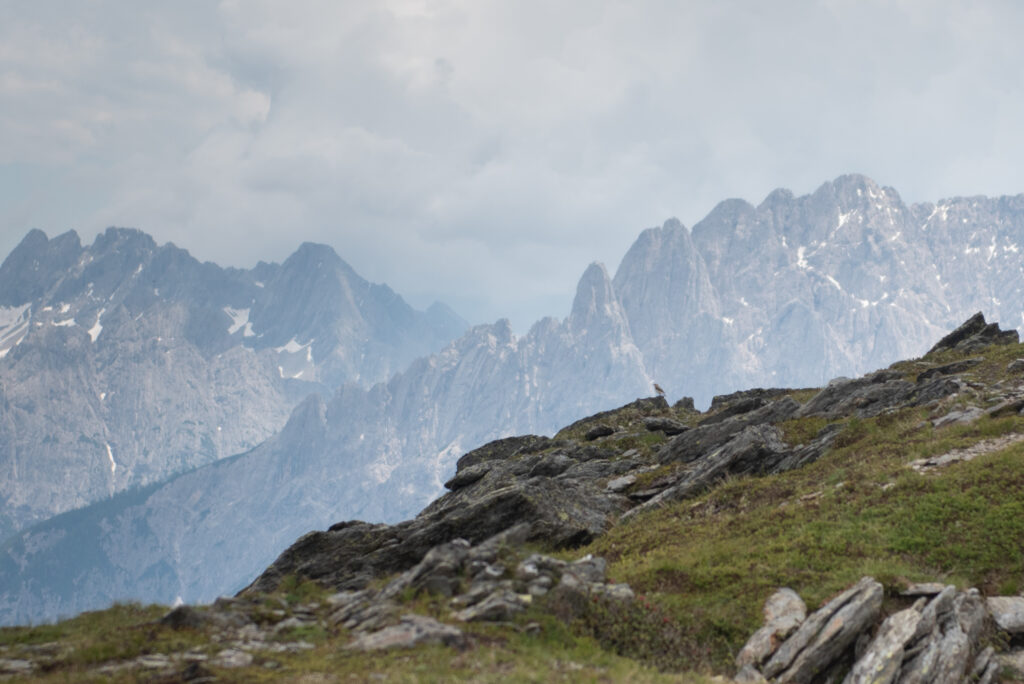
Romanticism one way or the other, the Alps are in fact under threat – and it’s only owed to the sturdy resilient nature of its fauna and flora that the fatal effects of climate change are not evident there. Apart from the appalling results of more than 50 years of skiing industry that play a part in the destruction of the pristine Alpine ecosystem.
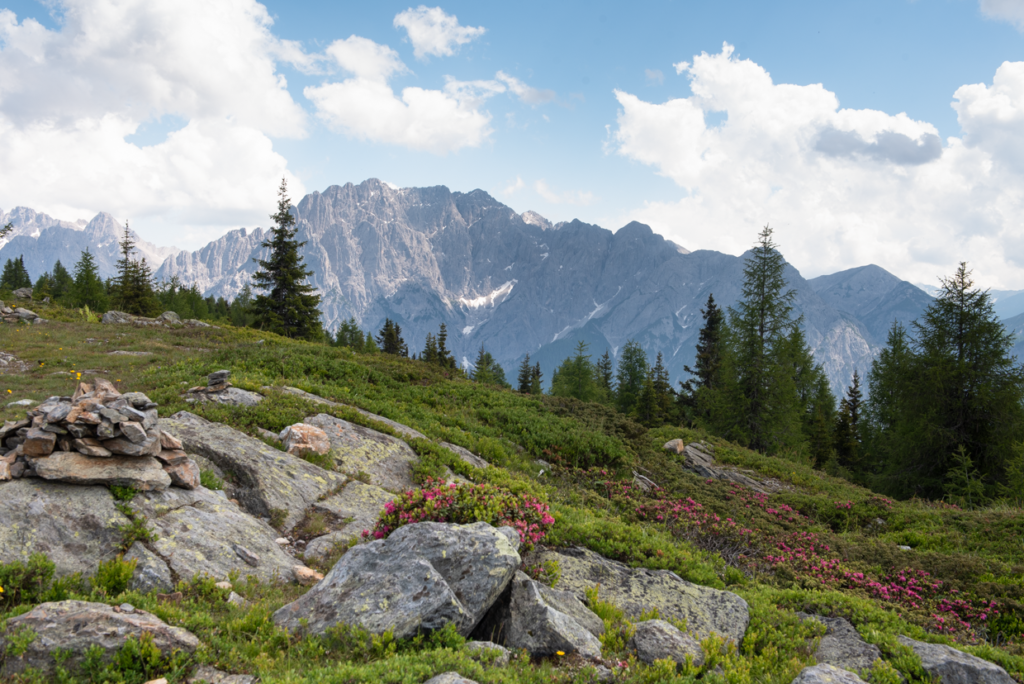
The Alps die in silence, and neither idealistic poetry nor meditative hiking will save them from climate change. Temperatures have risen by almost 2C within the last 100 years. Glaciers are melting away and permafrost soils of high altitude are thawing.
As for the Alpine creatures, the flowers and the marmots, they have silently moved upwards within the past decades. But for the Alpine Rose to climb any further up, the mountains aren’t high enough.
